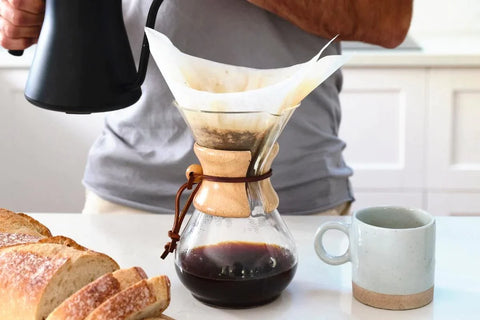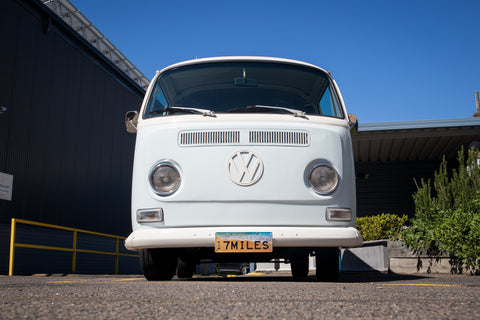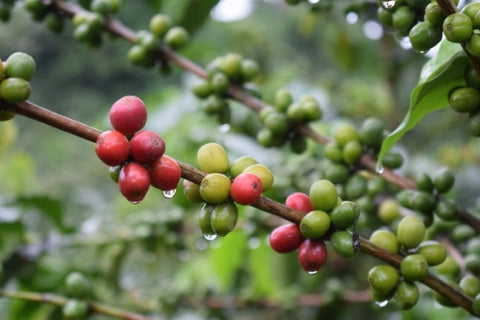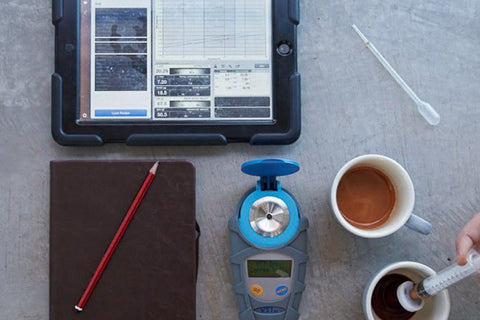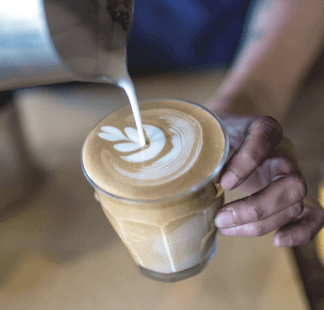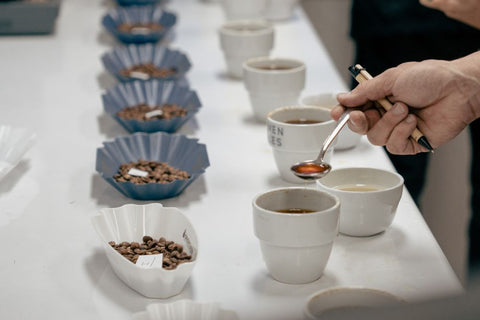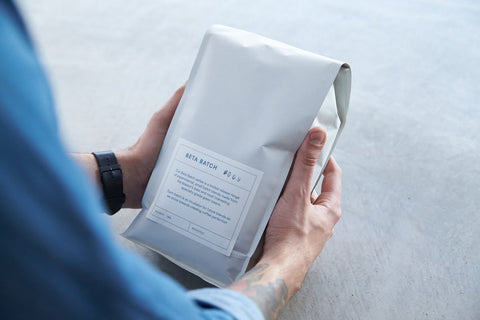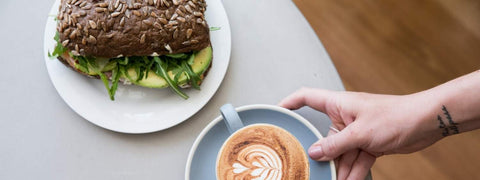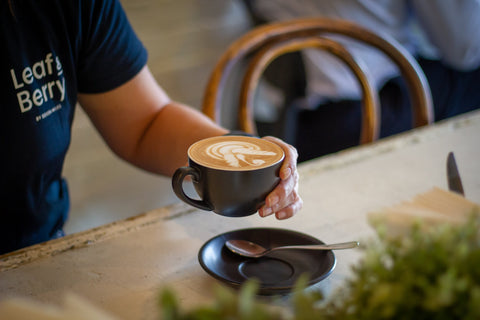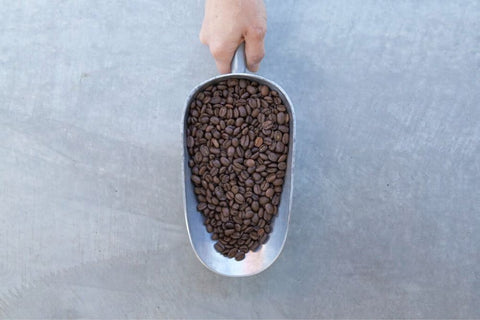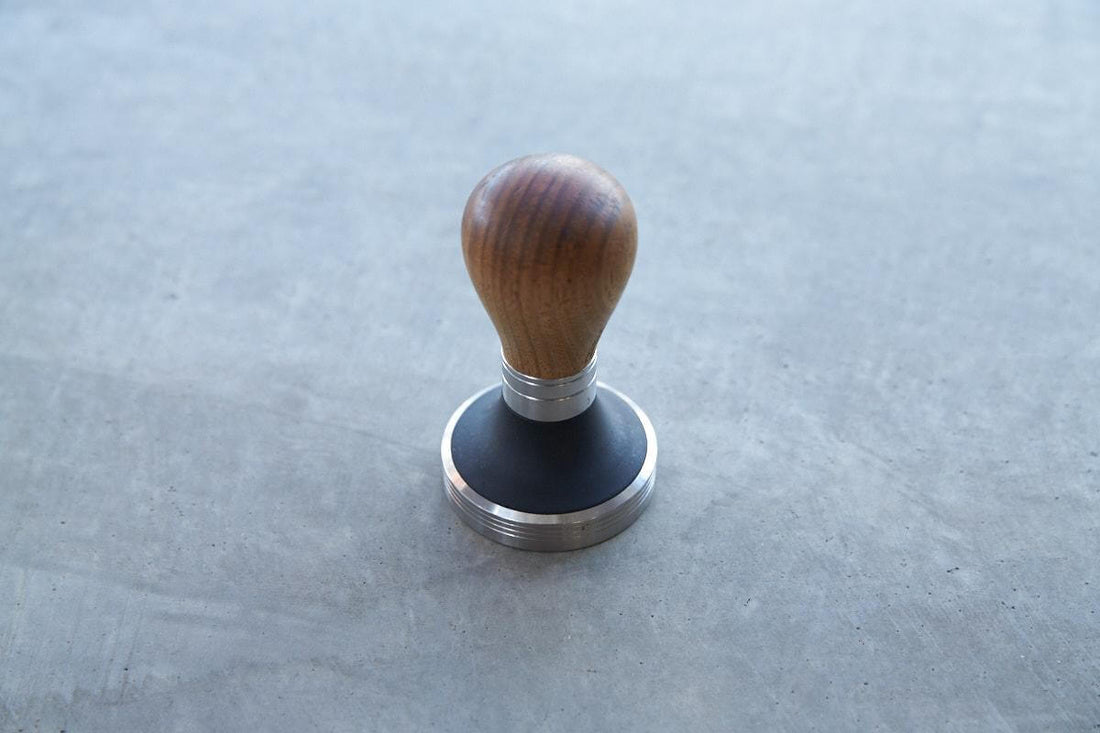Just like everything you could name that’s coffee-related, there are so many tamping variations out there — and everyone saying the way they teach or were taught is the right and only way. Even with something as simple as the tamp. And when tamping can be the difference between a great coffee or a dud, it’s worth getting right. So, let's start by exploring why we even do this thing called ‘tamping’ in the first place.
We've also done some research on the effects of coffee tamping, you can click here to take a look.
The Role of Tamping
When ground coffee is dosed into the portafilter basket it is very loosely piled up. This means there’s a lot of empty space between all those lovely particles. This isn’t an issue until we extract all the goodness contained in these little chunks with heated, pressurised water. However, water is lazy and will happily take the easiest route — if given the chance.
In particular, if there’s too much space or big empty voids within the mass of coffee grounds, the water is going to find these areas and have a really easy time flowing through this path of least resistance. This is called Channelling and it leads to under-extraction. Because water is lazy, we need to make it work hard. So by tamping, we minimise the empty spaces by creating a more dense mass of coffee. This forces the water to flow through and extract via contact and agitation with all of the available compounds contained in all of the coffee grounds. This reduces the chance of Channelling and subsequent under-extraction. Pretty simple, right? Nah, there’s more to it than you may think.
Technique: Getting Things Level
Just because I’m tamping doesn’t mean I’m necessarily helping the extraction conditions. Think of it this way: If I’m tamping and not paying attention, odds are my tamp isn’t going to be level in the basket (i.e. not parallel with the top of the basket). It will result in uneven density, causing inconsistent flow through the puck. See, that cheeky slacker, water, is going to come through the shower screen, hit the coffee, find that easy path through the less dense grinds and flow through there. This area will be exposed to much more water flow, leading to over-extraction, but under-extraction in other areas and inconsistent shot times across the board. Plus, if I’m really not watching what I’m doing, my uneven tamp is also going to be on a slightly different angle every time. So, I’m doing something that causes inconsistencies, inconsistently! Just tamp flat and level every single time. Consistency is key. So, be a robot, or perhaps buy one to do it for you
Technique: Getting the Pressure Right
When we tamp, we’re not trying to recreate the pressure the basket will receive from the espresso machine. Espresso is normally extracted using nine bar of pressure, delivered via the pump connected with the machine. This is equal to approximately 60 kgs of force per inch2. Considering an average basket (58mm) is approximately 4 inch2, that equals a full metric butt-load of pressure pushing down on our beautifully tamped coffee. As an average human, I cannot match that, so in all seriousness, I’m not going to even try. Instead, we’re using pressure when we tamp to make our coffee even and reduce those spaces between the grinds before they’re exposed to that pressurised water. However, the old wisdom passed down to us through the coffee ages has traditionally been: If your coffee is pouring too fast, tamp harder and vice-versa. But does the pressure we tamp with really affect our shot times? Recently, I set myself a little experiment: Using the same dose weights and grind settings, how much variance could I get in my shot times through adjusting my tamp pressure alone? The results? Over 30+ baskets, there was no more than 4-5 seconds difference — no matter how hard or soft I tamped. (For the record, not tamping at all had every second or third shot Channel really badly.) The easiest way to approach tamping pressure is this: Ensuring that the tamp will be level when pressure is applied, only push down hard enough so, if the basket is inverted, the coffee doesn’t fall out. That’s all you need. Any softer and you’ll see Channelling, any harder and you’ll suffer the ‘Barista wrist’, sore neck and sore back from trying to ‘force’ the coffee all day. It’s pretty simple: tamp with a straight wrist and don’t go too hard.
Tamping Myth Busting
When you break it all down, tamping is just angle and force. However, there’s a bunch of other stuff people do for one reason or another. Some of these things help, others have little impact on the outcome and others can undermine the quality of the coffee you’re producing. Here are the two most common ‘quirks’ I’ve seen: The Polish: A little twist during or after tamping to ‘clean’ the top of the tamped puck. Not necessary, in my honest opinion... at all. Twisting while applying downward force will help your tamp become uneven. Yes, it’ll help the appearance of the puck by smoothing out those 20 or so little grind particles dispersed on the top. But it’s a recipe for an uneven extraction and inconsistent shot times. Read the ‘Pressure’ bit again and you’ll realise those few grinds are going to have a negligible effect on your outcome. The ‘Tamp, Tap, Tamp’: This technique is everywhere: I’ve seen it in fish and chip shops through to being served Single Origin Geisha. Whatever you’re doing, please stop it. RIGHT NOW! While we used to be told you had to tap to loosen the grinds stuck to the side of the basket, it actually loosens the whole thing! By tapping the side of the handle (or bashing it on the bench), you’re knocking that puck away from the sides of the basket and creating cracks throughout the puck. Even if you tamp again after tapping, you can’t fix this. (Remember that thing called Channelling and the lazy water?)
Consistency is Key
So the story of the humble tamp boils down to two things:
- Level: Tamp flat and level
- Pressure: Push hard enough so the coffee doesn’t fall out if it’s turned upside down (but no harder)
While it might sound deceptively simple, doing it well — each and every time — is essential. Stay tuned for for my next tamping post where I’ll delve into the many gadgets and styles of tamper available in this crazy, modern world. In the meantime, if you want to learn more about tamping or practice with us, feel free to get in touch, come down to our Training Centre or join us for more in-depth learning at one of our Barista Training Programs.
